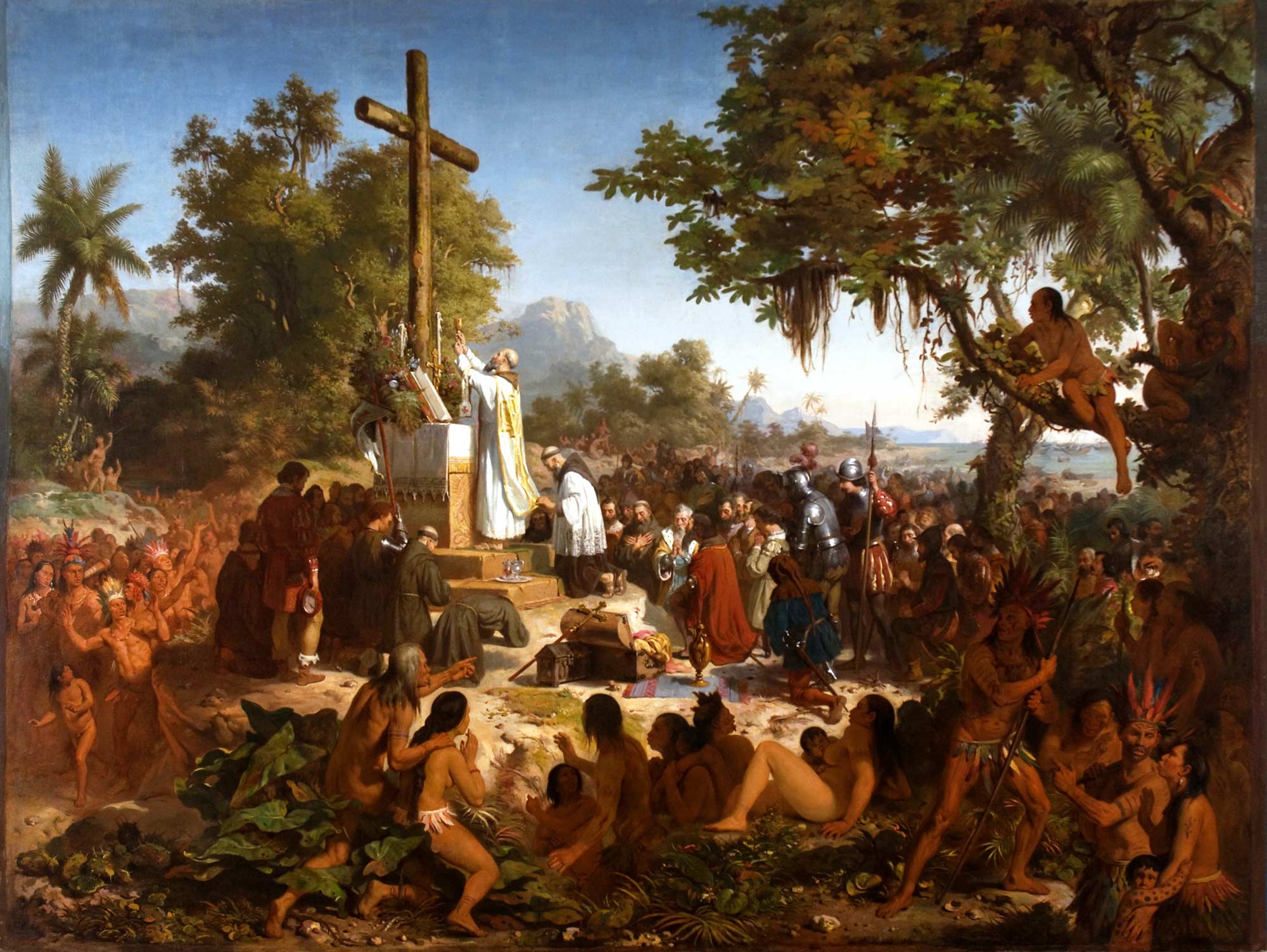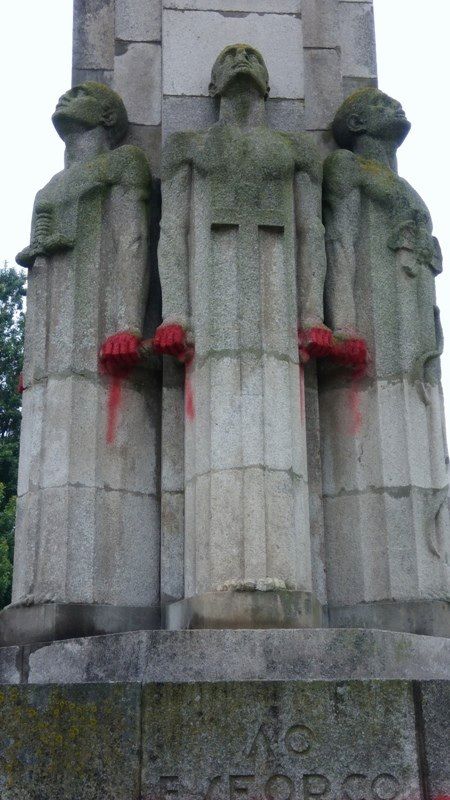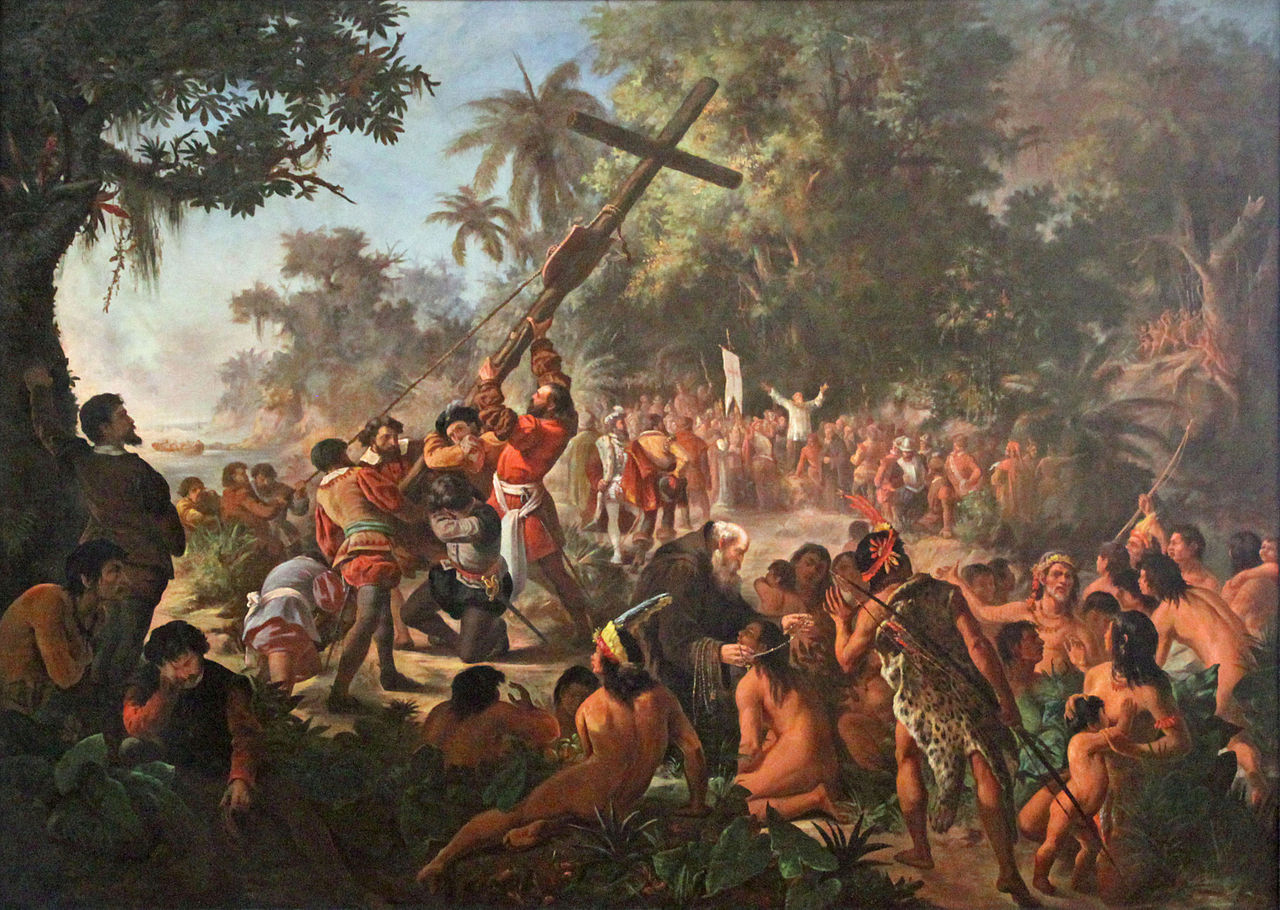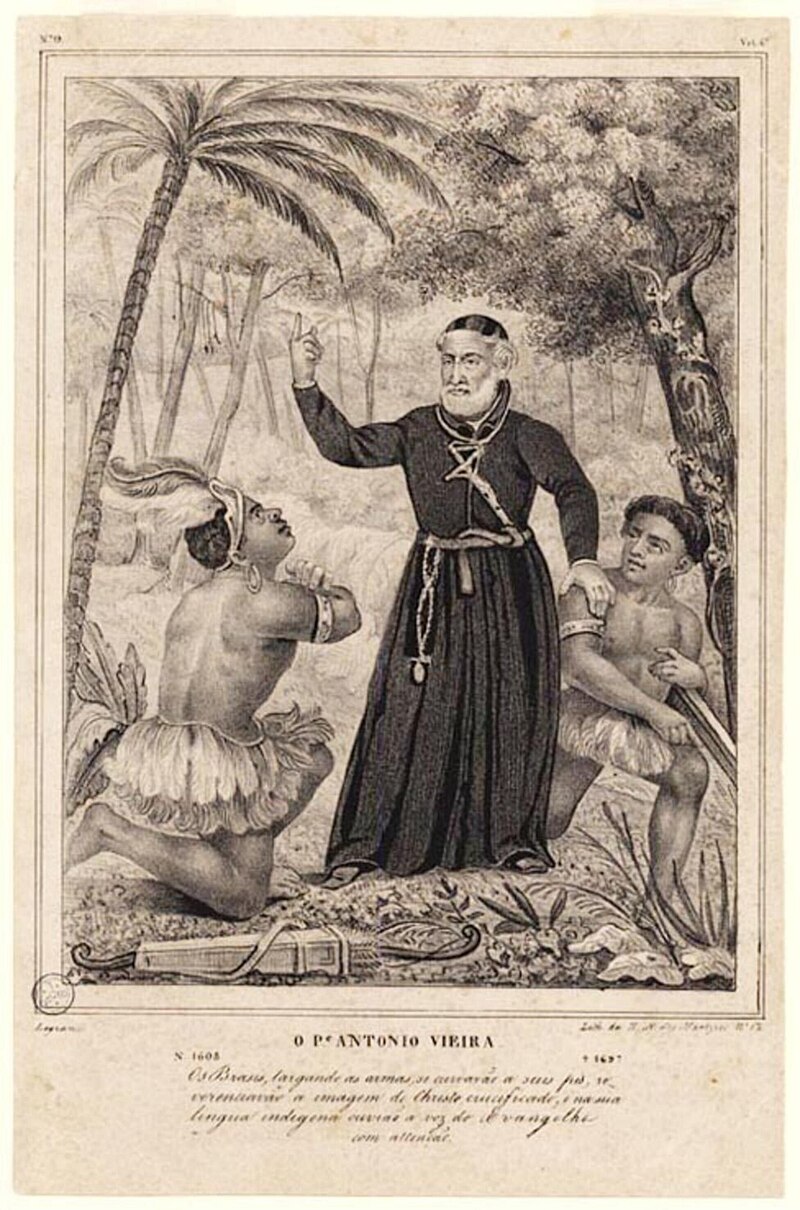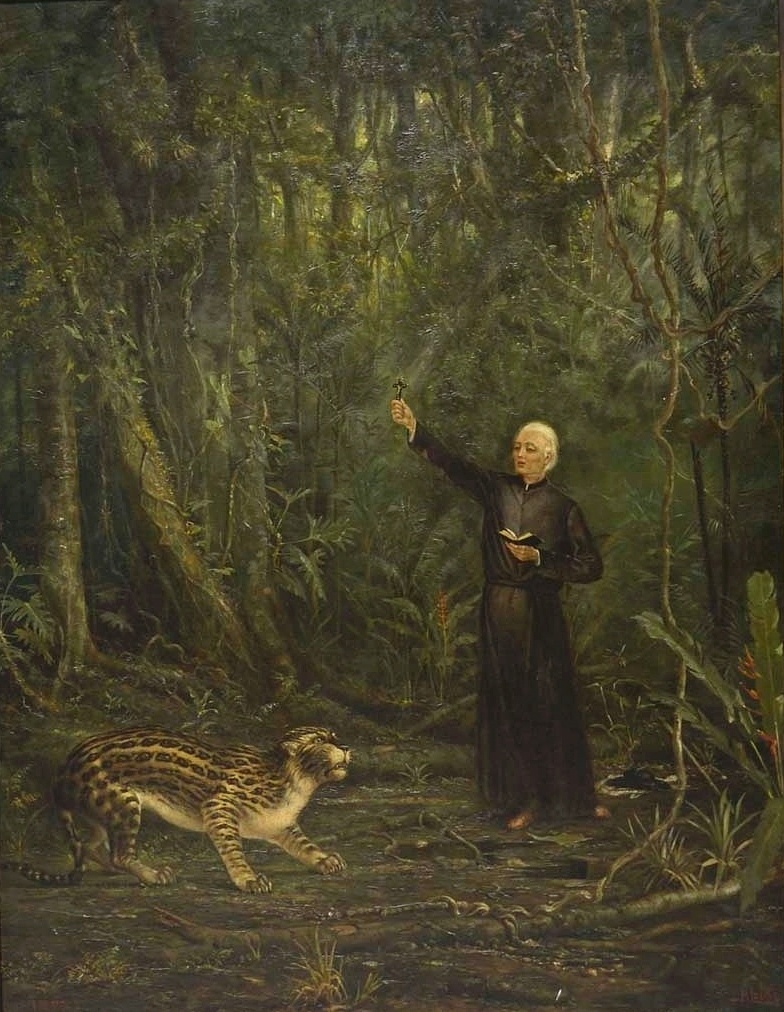Imagem
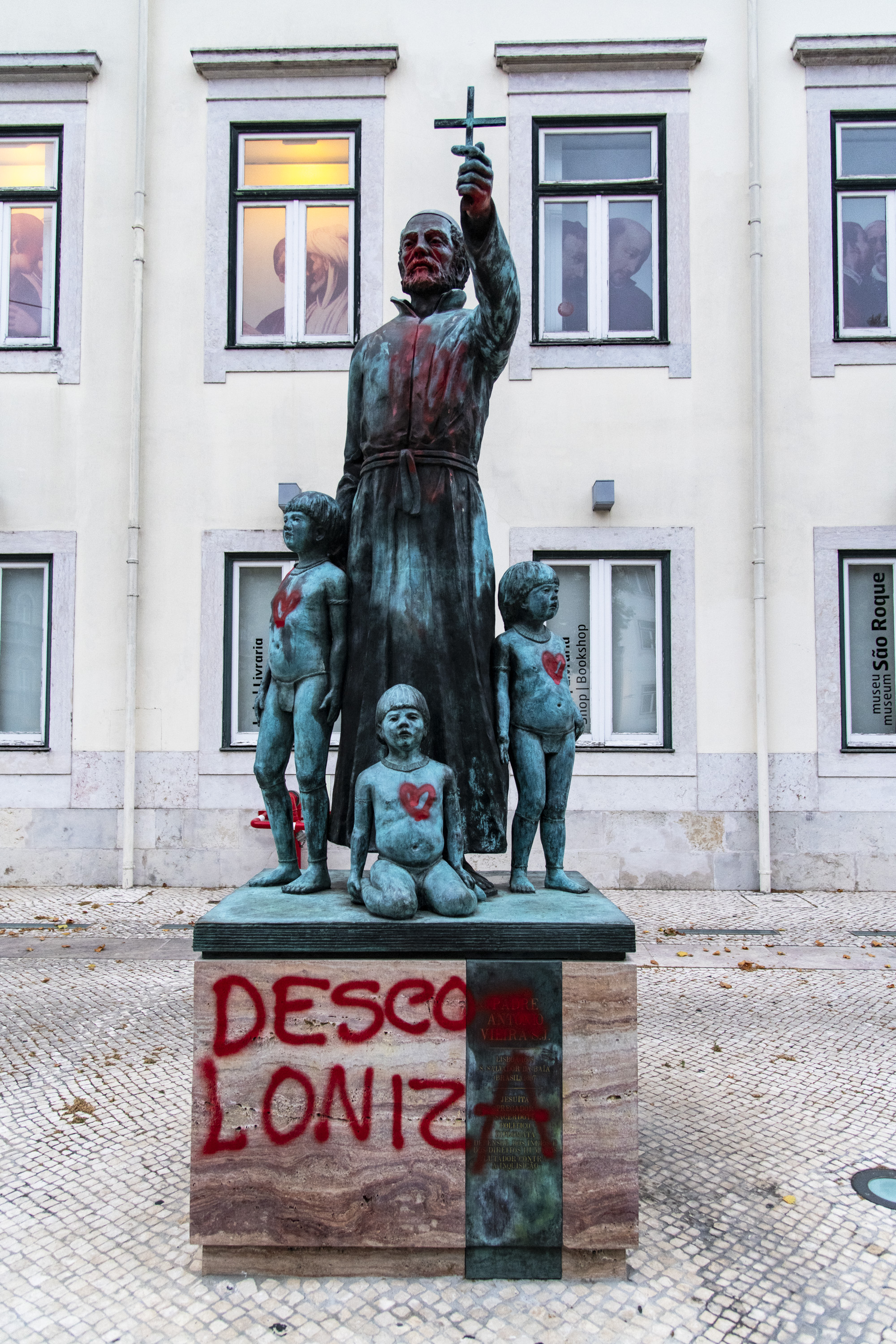
Reflexão
Father António Vieira statue
Inaugurated on 22 June 2017, the statue of Father António Vieira, designed by Marco Telmo Areias Fidalgo, was the result of a public competition.
The image was based on an engraving published in 1746 in the Jesuit's encomiastic biography. The three indigenous figures, originally adults, were replaced by three indigenous children, with the aim of magnifying and emphasising the priest as a protective and dominant figure.
On 5 October 2017, the day of the Implantation of the Republic, various Afro-descendant associations and individuals demonstrated, placing flowers and candles at the foot of the statue, to remember the oppression of native peoples caused by colonialism and Portuguese evangelisation
The popular commotion and discussion around the work drew the attention of neo-fascist associations, who also gathered at the site in an act of counter-demonstration to celebrate and defend Portugal's colonial past and its importance in national identity, highlighting the importance of these figures and monuments in maintaining the colonial narrative still present in the structure of Portuguese society.
On the night of 11 June 2020, in solidarity with the BLM movement, the monument was graffitied in red, in what news reports of the protest called an ‘act of vandalism’.
The figure of Father António Vieira, like all the Jesuit priests of the time, is remembered through a process of historical romanticisation, as a ‘defender of the rights of the Indians’. This narrative ignores the fact that the ‘salvation’ of the indigenous people from slavery (which, for the Jesuits, was uncontested in relation to people of African origin) was achieved through a violent process of evangelisation that included the forced loss of their original names, customs, clothing, language and culture.
